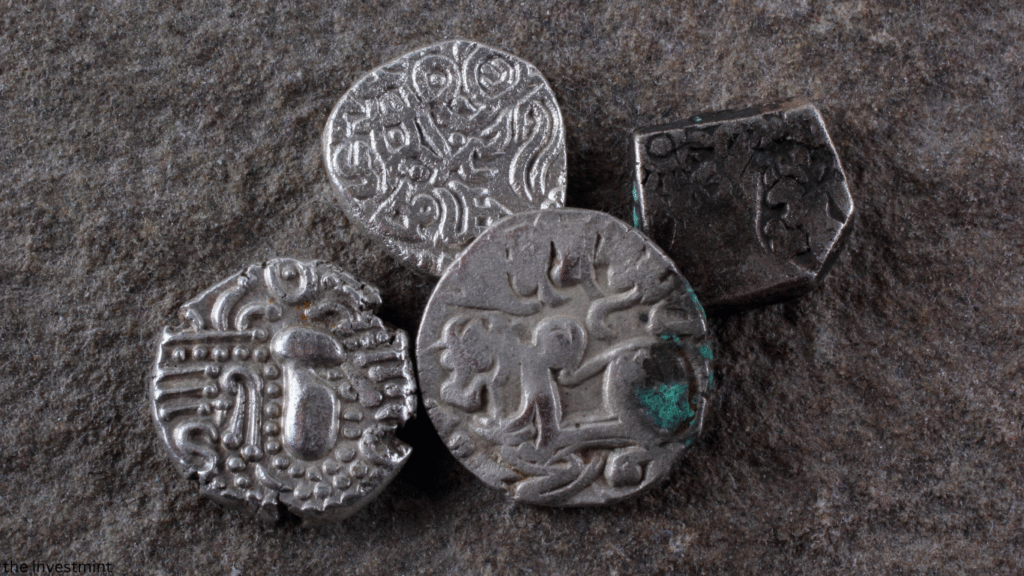Have you ever wondered how the concept of money works? Have you ever considered how strange it is that pieces of paper, plastic cards, or even numbers on a screen can buy us everything from lunch to a house? That’s the power of money, but it didn’t always exist like this.
Long before cash, coins, or credit cards, people had to trade what they had for what they needed. A sack of wheat for a goat. A handmade pot for a few loaves of bread. That worked for a while, but it wasn’t easy. Eventually, humans came up with a better solution: money.
In this blog, we’ll explore the concept of money, where it came from, and how it’s changed over time into what we use today.
Table of Contents
What Is Money?
At its heart, money is simple: everyone agrees it has value and can be used to buy or trade for things. But money isn’t valuable on its own. A coin or a bill is only worth something because people trust it.
Money helps us in four big ways:
- It lets us buy and sell easily.
- It gives everything a price tag.
- It lets us save for the future.
- And it helps us make promises to pay later (like with loans or credit).
The concept of money works because people believe in it. That trust gives money its power, not the paper it’s printed on or the code behind a bank app.
Life Before Money: The Barter System
Imagine you’re a fisherman and you want bread. You have to find someone who not only has bread, but also wants fish. That was the world of bartering; as you can guess, it was tricky and time-consuming.
This system worked in small communities, but it wasn’t enough once societies got bigger and trade grew. People needed something that everyone could agree was valuable. And that’s when the concept of money began to take shape.
The First Kinds of Money
Long ago, people started using things like salt, shells, or cattle as money. These were useful, and most people agreed they had value. But carrying bags of salt or livestock around wasn’t very convenient.

Then came metal money—especially gold and silver. Around 600 BCE, people in what is now Turkey began stamping coins from precious metals. These coins were easier to carry, didn’t spoil, and could be counted quickly. They were the first real version of money as we know it today, and they helped the concept of money spread across the world.
How Paper Money and Banks Changed Everything
China was ahead of the curve when it came to paper money. As early as the 7th century, Chinese merchants used notes instead of metal coins. Eventually, their government began printing official paper money.
It took Europe a few more centuries to catch up. However, trade became even easier once banks started issuing paper notes instead of heavy gold or silver. People began to trust banks and governments to keep their money safe, and the concept of money became even more about trust than about physical stuff like gold.
Saying Goodbye to the Gold Standard
For a long time, most money was backed by gold. This meant you could, in theory, trade your cash for a fixed amount of gold. However, during wars and economic crises, that system caused many problems.
In the 1970s, the U.S. (and eventually many other countries) stopped completely linking money to gold. Instead, governments decided what their money was worth, and people accepted it as long as they trusted the system. This was a significant shift in the concept of money—from something backed by shiny metal to something supported by trust and law.
Money Goes Digital
Today, many people barely carry cash. We tap our phones, swipe cards, or click a few buttons to send money halfway around the world.
The concept of money has changed again. It’s no longer just physical—it’s digital too. We check our bank balance online, pay with apps, and earn income from digital jobs or content.
And now there’s cryptocurrency—digital money that no government or bank controls. It’s a whole new take on the concept of money, offering freedom and innovation but also raising new questions about safety and stability.
Governments are also creating digital money (CBDCs), though let’s not get lost in acronyms. These aim to offer the convenience of crypto while keeping the system stable and secure.
Why Should You Care About the Concept of Money?
Understanding the concept of money helps you make better choices with your own money. It helps you:
- Understand what gives money value (hint: it’s not just paper).
- See how things like inflation or debt work.
- Spot changes in how money is used—and be ready for what’s coming next.
- Money is more than a paycheck or a price tag—it’s a daily tool. Knowing how it works puts you in control.
Wrapping Up
The concept of money has come a long way—from bartering sheep to scanning your phone at a café. And it’s still changing fast. But at every stage, the heart of money has stayed the same: we all agree to believe in it.
Next time you pull out a coin or tap your card, think about this: it only works because we all trust that it does. And that, in itself, is kind of amazing.
Also read: Investing for Beginners: A Step-by-Step Guide


Thanks for sharing. I read many of your blog posts, cool, your blog is very good. https://www.binance.info/register?ref=IXBIAFVY
Thanks for sharing. I read many of your blog posts, cool, your blog is very good. https://accounts.binance.com/es/register?ref=RQUR4BEO